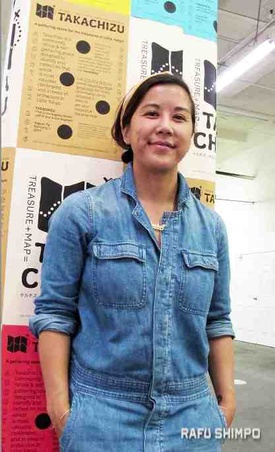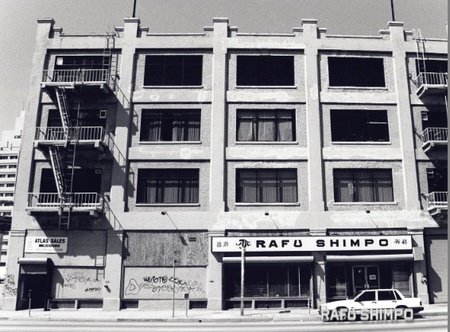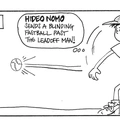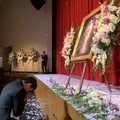Walking into the Vida Group Building on South Los Angeles Street, I couldn’t help but sense the ghosts of the past. In the grey building next door, paperboys rolled up copies of the day’s newspaper and hopped on bikes, Mrs. Hotta welcomed visitors into the lobby while reporters took smoke breaks on the street.
Rafu has moved twice since that time, but the memories remain powerful. The neighboring Vida building is now home to Takachizu (translation: treasure map), a gathering space for Little Tokyo community members to share memories and mementos. As you enter, white dots painted on the concrete floor lead into the open warehouse space. On the wall, sheets of ochre, blue and red are printed with the ephemera that define this historic neighborhood.The treasures include a poster for a Zenshuji Obon carnival, an old shoebox from Asahi dry goods store, a menu from Poppy’s Snack Shop. In time, the hope is that the warehouse space will be filled with such treasures. A scanner and lightbox are set up to record items. The space is open on Fridays from 3 to 5 p.m. and the public is welcome to bring in their mementoes and share stories.
Maya Santos, co-director of the project in collaboration with artist Rosten Woo, said she hopes that sharing these items will spur a community dialogue that will protect and strengthen Little Tokyo in the future.
Santos, a Seattle native, is a filmmaker whose projects include a documentary on Japanese Union Church, and “Walking with Grace,” a virtual reality documentary that shows how a blind woman navigates the streets of Little Tokyo.
Takachizu is one of the first projects under the ArtPlace initiative, a $3 million multi-year community development investment grant awarded to Little Tokyo Service Center. ArtPlace first tasked LTSC with mapping the community’s assets and Takachizu accomplishes those goals in a social and creative way.
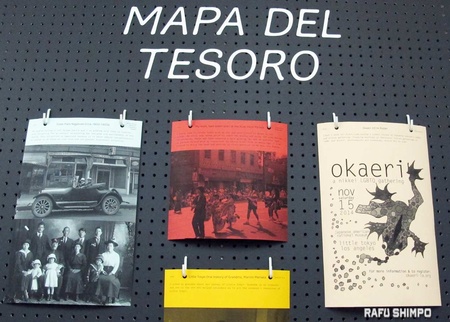
On a recent Thursday night, Visual Communications, another former tenant of the building, screened documentaries created in the 1970s and 1980s, documenting episodes such as the closing of the Sun Building.
The films capture a persistent, repeating narrative in Little Tokyo: a neighborhood that has seemingly been under constant threat of extinction, through wartime evacuation, government encroachment, redevelopment or gentrification. All that is left in many instances are memories and artifacts such as those sought by Takachizu.
Takachizu is a project of Sustainable Little Tokyo initiated by +LAB, LTSC’s creative community development strategy utilizing collaboration and experimentation to advance Little Tokyo’s power over its future.
Santos said that other organizations and groups are welcome to utilize the space to share their stories. Other uses for the space include Japanese arts demonstrations, writing workshops and multi-media presentations.
The Vida Building will remain open until next February when it will make way for the construction of the Budokan gymnasium. After February, a Takachizu book will be published (slated for April) and organizers hope to continue Takachizu on a smaller scale at another pop-up space in Little Tokyo.
When the Vida is torn down, it will feel like a part of history will be gone, but it will make way for Budokan, a new hopeful chapter for Little Tokyo.
Takachizu is located at 249 S. Los Angeles St. between Second and Third streets. To make an appointment, email takachizuinfo@gmail.com or call (213) 473-1640. To view images gathered thus far for the project, visit takachizu.tumblr.com.

* This article was originally published on The Rafu Shimpo on October 24, 2016.
© 2016 The Rafu Shimpo / Gwen Muranaka



